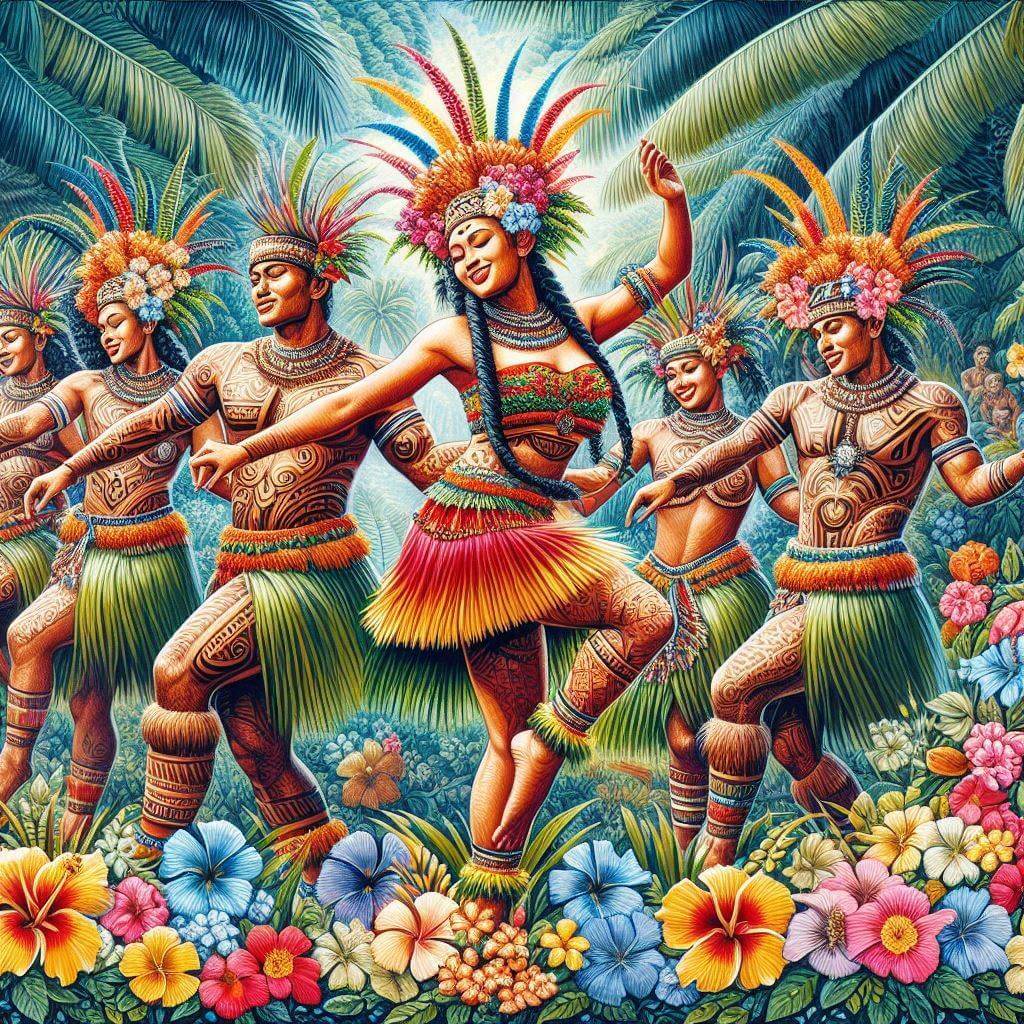The flag of French Polynesia, an overseas collectivity of France in the South Pacific Ocean, features a distinctive design that reflects the region's rich cultural heritage and natural beauty. It consists of three horizontal stripes: red at the top and bottom, with a wider white stripe in the center. Within the white stripe is a circular emblem featuring a stylized Polynesian outrigger canoe (va'a) beneath a golden sun with rays.
French Polynesian Flag Information
| National Flag Day | — |
| Sovereign state | No |
| Official name | French Polynesia |
| Capital | Papeete |
| Population | 285,321 |
| Area | 4,167 km² |
| Currency | CFP franc (XPF) |
| Language | French, Tahitian |
| Continent | Oceania |
| Region | Pacific Ocean |
| Subregion | — |
| Borders | — |
| Timezone | UTC-10:00 |
| Calling code | +689 |
| Top-level domain | .pf |
History of the French Polynesian Flag
 The current flag of French Polynesia was officially adopted on November 23, 1984. Its design was chosen to represent the unique identity of French Polynesia while acknowledging its connection to France. The flag replaced various earlier designs used during the colonial period and reflects the territory's move towards greater autonomy within the French Republic.
The current flag of French Polynesia was officially adopted on November 23, 1984. Its design was chosen to represent the unique identity of French Polynesia while acknowledging its connection to France. The flag replaced various earlier designs used during the colonial period and reflects the territory's move towards greater autonomy within the French Republic.
Symbolism and Design of the French Polynesian Flag
Each element of the French Polynesian flag carries deep symbolic meaning:
- Red Stripes: Represent the blood of the Polynesian people and their connection to the land. Red is also a traditional color of royalty in Polynesian culture.
- White Stripe: Symbolizes purity and the harmonious relationship between the people and their environment. It also represents the European influence in the islands' history.
- Va'a (Outrigger Canoe): Centrally placed, this traditional Polynesian vessel symbolizes the seafaring heritage of the Polynesian people, their skill in navigation, and the importance of the ocean in their culture and daily life.
- Golden Sun: Represents life, energy, and the warmth of the Polynesian spirit. The sun's rays symbolize the spread of Polynesian culture across the Pacific.
- Circle: The circular emblem represents unity and the cyclical nature of life in harmony with the natural world.
Usage and Significance of the French Polynesian Flag
 The flag of French Polynesia is a powerful symbol of local identity and pride. It is widely displayed throughout the islands, particularly during cultural festivals, sporting events, and official ceremonies. While the French Tricolore remains the official national flag, the French Polynesian flag is used to represent the territory in regional Pacific organizations and events.
The flag of French Polynesia is a powerful symbol of local identity and pride. It is widely displayed throughout the islands, particularly during cultural festivals, sporting events, and official ceremonies. While the French Tricolore remains the official national flag, the French Polynesian flag is used to represent the territory in regional Pacific organizations and events.
The flag serves as a unifying symbol for the diverse archipelagos that make up French Polynesia, including the Society Islands (with Tahiti), the Marquesas Islands, the Tuamotu Archipelago, the Gambier Islands, and the Austral Islands. It represents the shared cultural heritage and aspirations of these island groups within the framework of their relationship with France.
Interesting Facts About French Polynesia
- French Polynesia comprises 118 islands and atolls spread over an area of the South Pacific Ocean roughly the size of Western Europe, making it one of the largest groups of islands in the world.
- Tahiti, the largest island and economic center of French Polynesia, has long been synonymous with tropical paradise in Western imagination, inspiring numerous artists, writers, and filmmakers.
- The islands of French Polynesia are known for their stunning natural beauty, including crystal-clear lagoons, coral reefs, and lush mountainous landscapes. This environment has made tourism a crucial part of the economy.
- French Polynesia has a rich cultural tradition, including distinctive music, dance (such as the famous ''ori tahiti'), and art forms like tattoo and tifaifai (appliqué quilts).
- The territory was the site of French nuclear testing between 1966 and 1996, a controversial period that has had lasting environmental and health impacts and influenced the political relationship between French Polynesia and France.